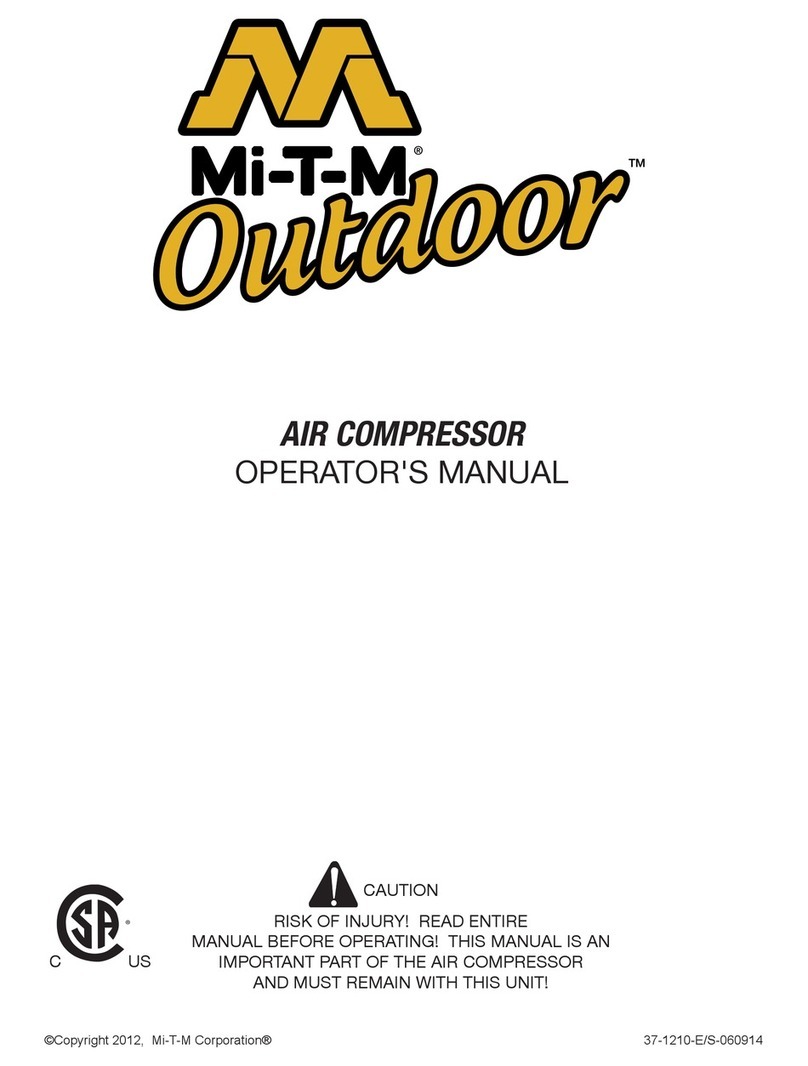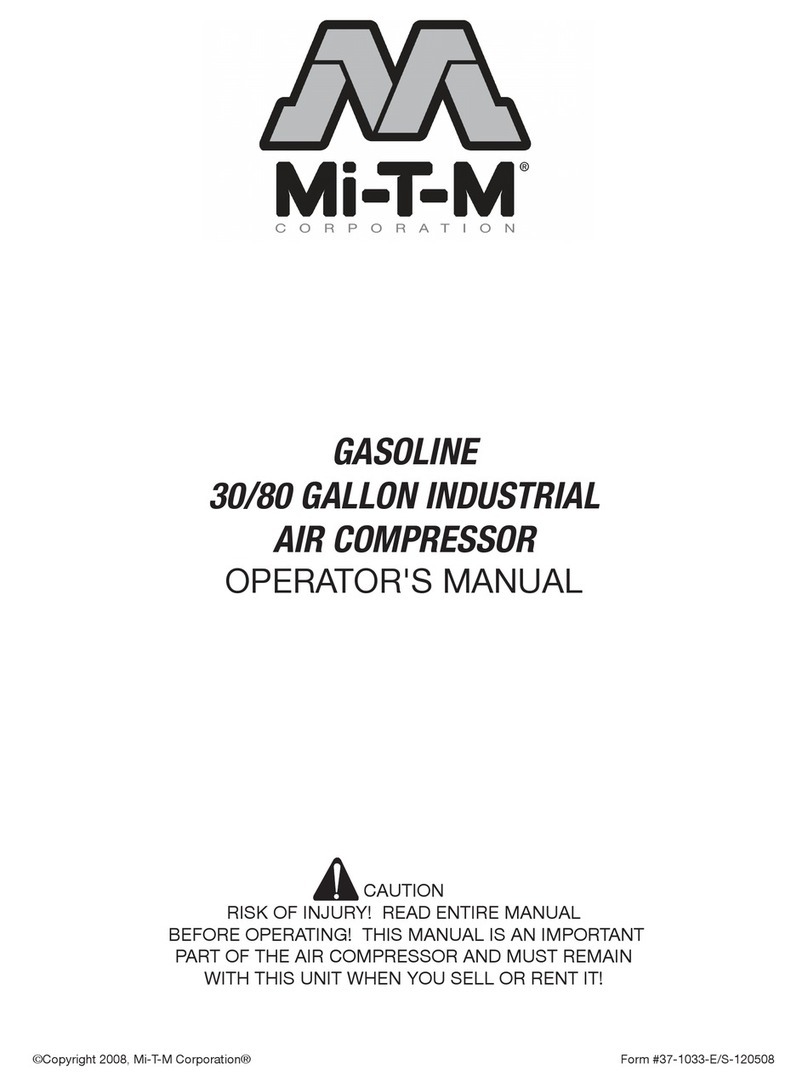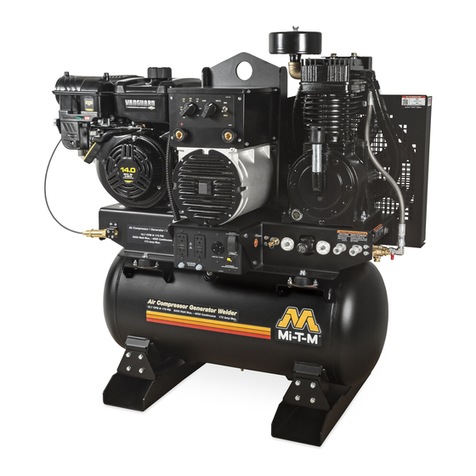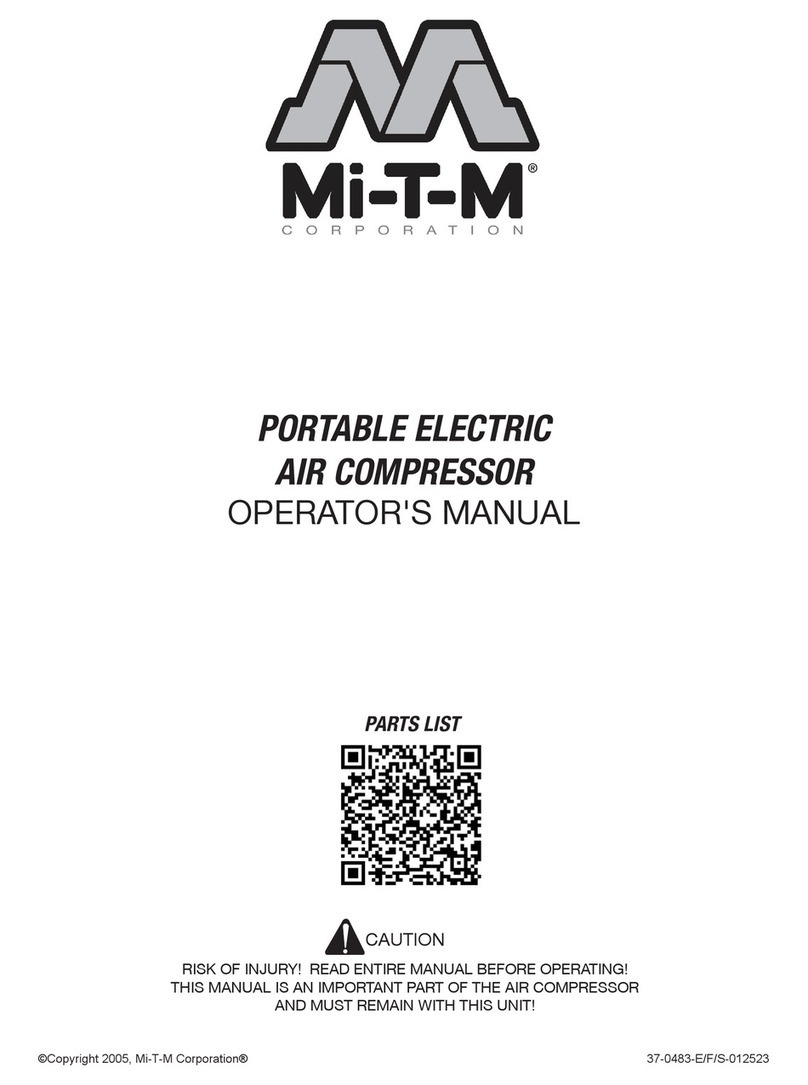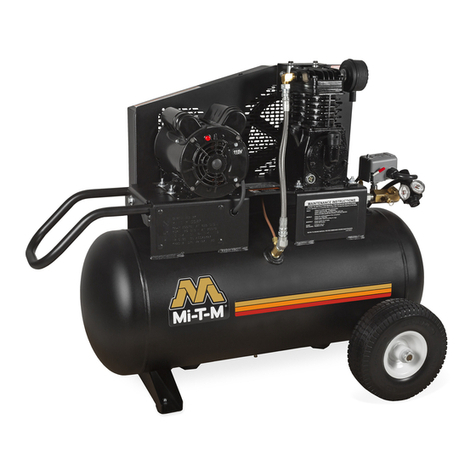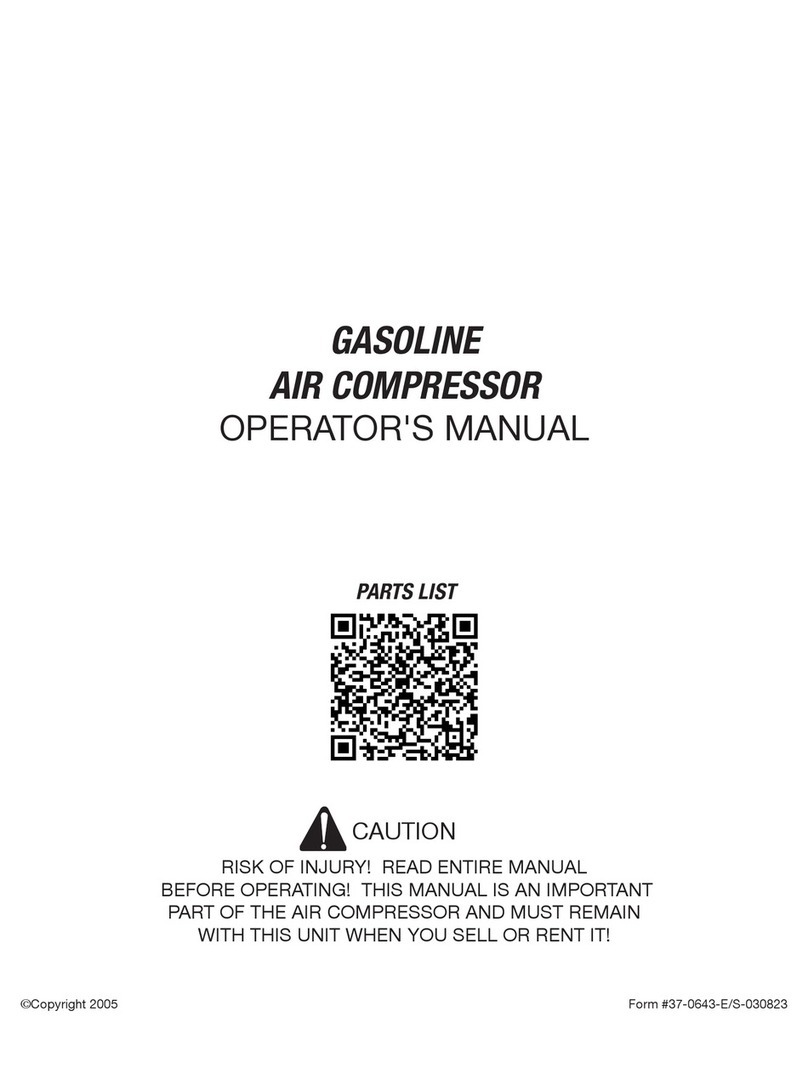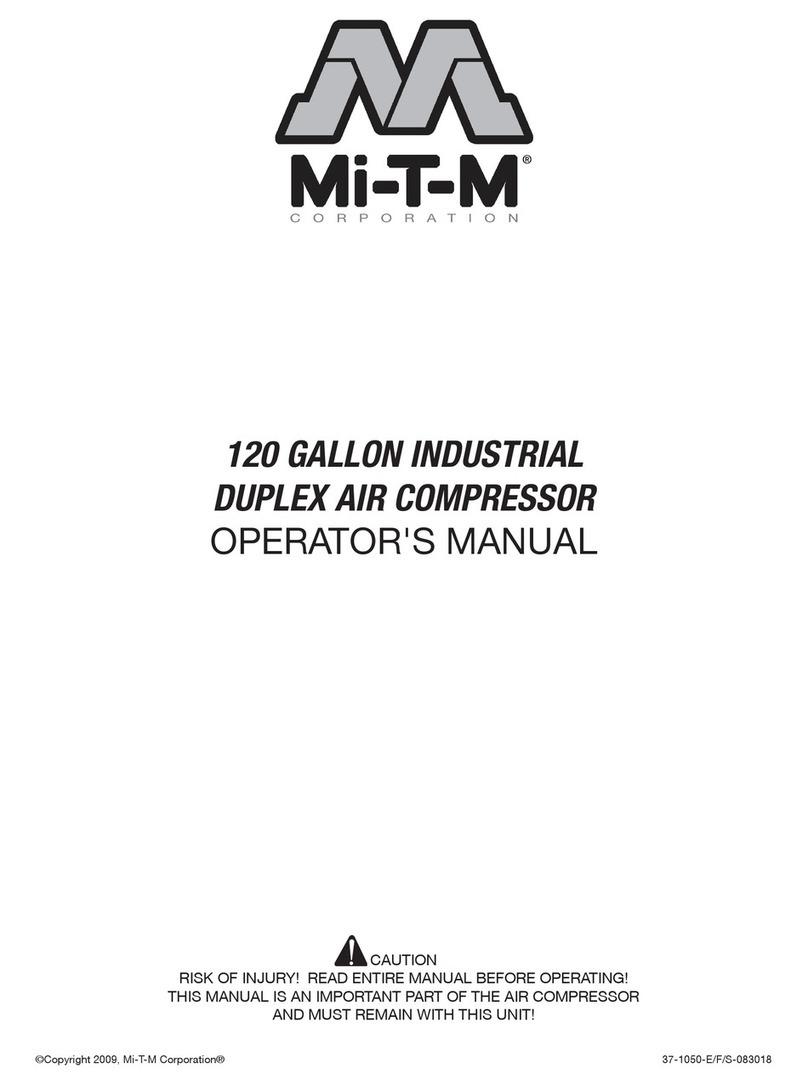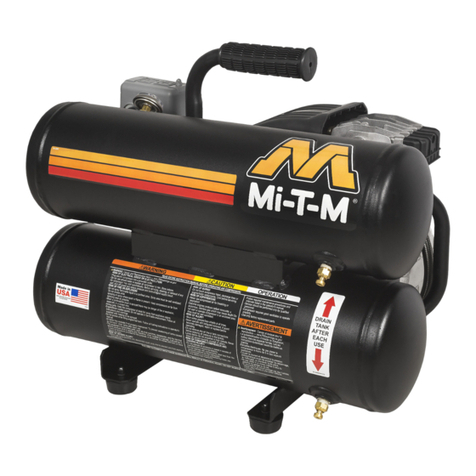
5
©Copyright 2009, Mi-T-M Corporation® EX-9746-061616
GENERAL THEORY OF OPERATION
1. The POWER CORD (1) sends the electrical supply to the PRESSURE SWITCH (2). When the PRESSURE SWITCH LEVER (3) is in the "Auto" position,
power is supplied to the ELECTRIC MOTOR (4) which is protected from electrical overloads by the MANUAL RESET BUTTON (5).
2. The COMPRESSOR PUMP (6) is lubricated by oil. The oil level should be checked before each use by removing the COMPRESSOR PUMP OIL
DIPSTICK (7). Fill to proper level with SAE-30W non-detergent oil if needed.
3. When the unit is operating, the V-BELT (8) turns the COMPRESSOR PUMP FLYWHEEL (9) which rotates the crankshaft and moves the PISTONS (10).
4 As the PISTON (10) moves down, air is drawn in through the INLET AIR FILTER (11) and then through the INLET REED VALVE (12). At the same time,
the OUTLET REED VALVE (13) is closed. This allows air to ll the piston chamber.
5. As the PISTON (10) moves up, the INLET REED VALVE (12) closes and the OUTLET REED VALVE (13) opens allowing the compressed air to ow into
the PUMP DISCHARGE LINE (14).
6a. STANDARD START/STOP FEATURE:
1. The compressed air opens the CHECK VALVE (15) and moves into the AIR TANK (16). When the pressure in the AIR TANK (16) reaches the
maximum pressure setting of the PRESSURE SWITCH (2), the ELECTRIC MOTOR (4) stops and the CHECK VALVE (15) will close.
2. The pressurized air remaining in the PUMP DISCHARGE LINE (14) exits through the PRESSURE SWITCH BLEND-OFF LINE (17) so the
ELECTRIC MOTOR (4) can restart under a no-load condition.
6b. OPTIONAL DUAL CONTROL FEATURE:
1. This feature consists of a PILOT CONTROL VALVE (18) which has an ADJUSTING KNOB (19) with two positions.
a. Start/Stop Position: Turn the ADJUSTING KNOB (19) completely clockwise to the closed position. Air compressor will
operate as described in the Start/Stop Feature as explained above.
b. Constant Run Position: Turn the ADJUSTING KNOB (19) completely counterclockwise to the open position. The compressed air
opens the CHECK VALVE (15) and moves into the AIR TANK (16). When the pressure in the AIR
TANK (16) reaches the maximum pressure setting of the PILOT CONTROL VALVE (18), the excess
air exits the PILOT VALVE MUFFLER (20) and the CHECK VALVE (15) will close. Since the relief setting
on the PILOT CONTROL VALVE (18) is lower than the maximum pressure setting on the PRESSURE
SWITCH (2) the ELECTRIC MOTOR (4) will continue running. This feature is very useful under low
voltage conditions, when motor starting can trip the circuit breaker (fuse).
7. The SAFETY RELIEF VALVE (21) protects the system from any overpressure conditions.
8. The TANK PRESSURE GAUGE (22) indicates tank pressure. The AIR PRESSURE REGULATOR (23) can be adjusted to the desired operating pressure
which is indicated on the OUTLET PRESSURE GAUGE (24). The air exits through the OUTLET FITTING (25).
9. The PRESSURE SWITCH LEVER (3) stops the ELECTRIC MOTOR (4) when moved to the “OFF” position.
10. When the PRESSURE SWITCH LEVER (3) is in the "off" position, compressed air should be released from the AIR TANK (16) by opening the attached air
tool or by pulling on the SAFETY RELIEF VALVE (21). When the TANK PRESSURE GAUGE (22) registers less than 10 PSI, drain the condensation from
the AIR TANK (16) by opening the TANK DRAIN (26).

